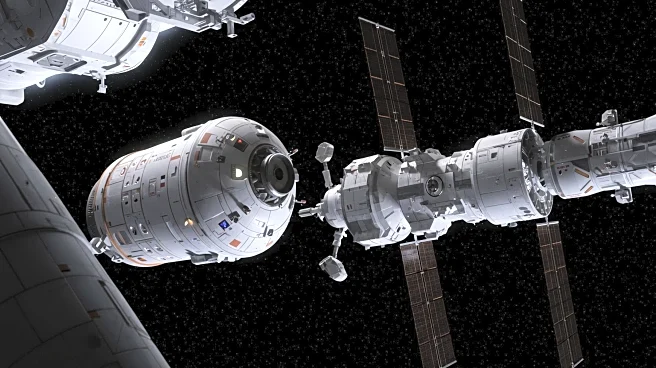What's Happening?
NASA's North American X-15 rocket-powered aircraft achieved a significant milestone in hypersonic flight during the 1960s. The X-15, air-launched from a B-52, reached a record-breaking speed of Mach 6.7, earning astronaut wings for eight of its pilots. The aircraft was not intended as a weapon but served as a successful research platform, pioneering technologies such as titanium alloys, full-pressure space suits, and reaction controls for space attitude control. Over nine years, 12 pilots conducted 199 flights, with 13 meeting the Air Force's criteria for spaceflight. The X-15's liquid-propellant rocket engine produced 600,000 horsepower and 70,400 pounds of thrust, enabling it to achieve incredible speeds. The program contributed significantly to aerospace industry standards and space program technologies.
Why It's Important?
The X-15 program's success had far-reaching implications for the aerospace industry and space exploration. It encouraged the use of exotic alloys like titanium, leading to new machining and production techniques. The development of full-pressure suits for pilot protection in space was a direct result of the X-15's flights. Additionally, the aircraft's use of reaction controls for attitude control in space influenced re-entry techniques and related technologies. These advancements contributed to the space program and even earth science experiments conducted during some flights. The X-15's legacy continues to impact high-speed aviation and hypersonic research, shaping future efforts in these fields.
What's Next?
The lessons learned from the X-15 program are likely to influence new hypersonic efforts as global focus shifts towards these technologies. The advancements in materials, control systems, and spaceflight techniques developed during the X-15 program will continue to inform future aerospace projects. As hypersonic research progresses, the foundational work of the X-15 will remain relevant, guiding innovations in high-speed flight and space exploration.
Beyond the Headlines
The X-15 program highlighted the importance of collaboration between military and civilian agencies in advancing aerospace technology. The partnership between NASA and the Air Force facilitated the development of groundbreaking technologies that benefited both sectors. The program also demonstrated the value of experimental aircraft in pushing the boundaries of flight and space exploration, setting a precedent for future research initiatives.











